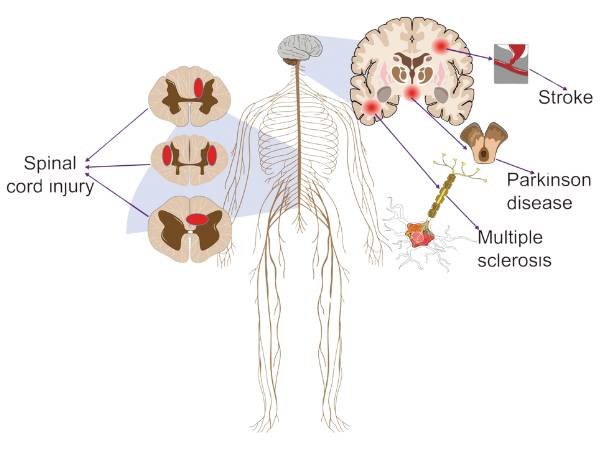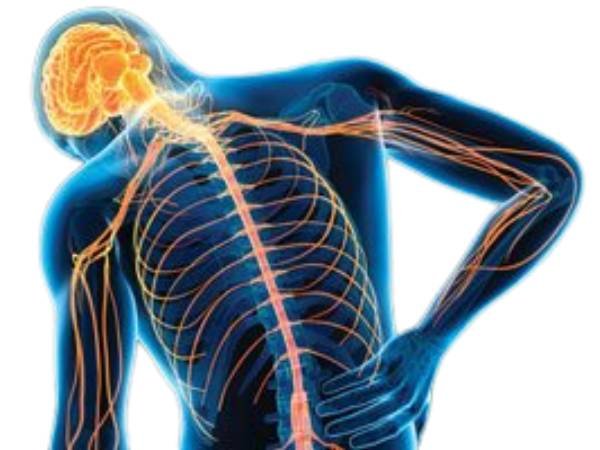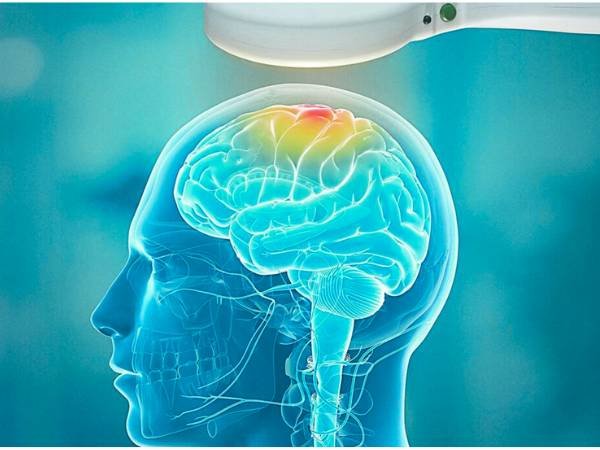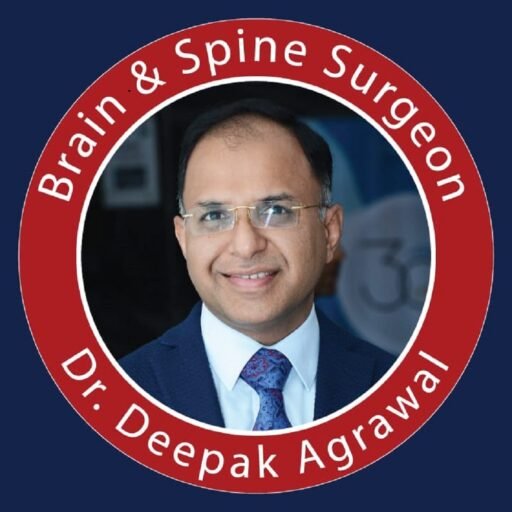Topics
Table of Contents
What is Chronic Pain?
Pain lasting longer than three months is considered chronic. You might experience the pain continuously or intermittently. It has many different causes and can occur anywhere in your body. People may become so affected that they are unable to work, eat healthily, exercise, or enjoy life. It is a serious medical problem that needs to be treated.

According to recent research, chronic pain is still a major health issue for adults in India. According to a 2022 study that examined data from the Longitudinal Ageing Study in India (2017–2018), which involved 58,328 adults 45 years of age and older, almost 37% of them experienced discomfort often. The incidence rose with age, reaching 43.4% in people 75 years of age and older, and it was higher in women (41.4%) than in men.
About half of middle-aged and older persons in India reported joint pain, 31.7% claimed back pain, and 19.9% indicated ankle or foot pain, according to another analysis of the same dataset. Older persons, women, people living in rural areas, and people with less education were more likely to have these illnesses.
These results demonstrate the significant incidence of chronic pain in India’s adult population, especially among women and older adults, and its negative effects on day-to-day functioning and quality of life.
One of the most frequent conditions for which people seek medical attention is chronic pain. Approximately 20.9% of American adults (51.6 million) reported having chronic pain in 2021, according to a U.S. Centres for Disease Control and Prevention (CDC) study.
Your body uses pain as an alarm to let you know that anything is wrong. However, if that alarm keeps going off for months or years, it can overpower many of the things that make life enjoyable. Additionally, it can negatively impact your mental, emotional, and physical well-being. For this reason, getting treatment for chronic pain is crucial. Your medical professional and you can work together to create a strategy that will help reduce chronic pain.
Chronic pain continues to be a major medical concern that calls for innovative approaches to therapy that go beyond traditional medications and invasive surgery. By using powerful techniques like radiofrequency, ultrasound, and radiation to modify pain pathways without compromising the skin barrier, non-invasive lesioning techniques have become feasible substitutes. The processes, indications, effectiveness, and therapeutic uses of several non-invasive lesioning procedures in neurosurgery are thoroughly examined in this article.
A key component of neurosurgical therapy is pain management, especially for patients with cancer-related and refractory neuropathic pain. Traditional treatment approaches, such as medicine, physical therapy, and invasive neuromodulation, have drawbacks in terms of expense, procedural risks, and adverse effects.
Non-Invasive Lesioning Mechanisms
The precise energy delivery used in non-invasive lesioning procedures disrupts the brain networks linked to pain perception. Among the primary mechanisms are:

- Thermal Ablation: Causes coagulative necrosis and is brought on by concentrated ultrasonography or radiofrequency waves.
- Radiation-Induced Neuromodulation: Pain-conducting pathways are disrupted by targeted gamma radiation.
- Low-intensity electromagnetic fields can modify neuronal excitability by electromagnetic modulation without causing irreversible structural damage.
Non-Invasive Lesioning Techniques
- FUS, or focused ultrasound

Mechanism: Impacts specific neurological structures by producing heat through high-intensity sound waves.
Trigeminal neuralgia, neuropathic pain, and essential tremor are among the indications.
Benefits include accurate lesioning, real-time MRI guidance, and few adverse effects.
- GKR, or Gamma Knife Radiosurgery
Mechanism: Causes delayed axonal degeneration by delivering large doses of radiation to certain brain regions.
Indications include cancer-related discomfort and trigeminal neuralgia.
Benefits include long-lasting pain alleviation, an outpatient treatment, and no incision.
Mechanism: Modulates cortical and subcortical structures via electromagnetic waves.
Indications include complicated regional pain syndrome, fibromyalgia, and neuropathic pain.
Benefits include non-invasiveness, repeatability, and patient response adaptation.
- HF-SCS, or high-frequency spinal cord stimulation

Mechanism: Uses high-frequency electrical stimulation to alter pain signals without producing a noticeable feeling.
Indications include failed back surgery syndrome and persistent back discomfort.
Benefits include being well-tolerated, reversible, and adaptable.
Safety and Clinical Effectiveness
Non-invasive lesioning approaches have been shown in numerous trials to be effective in lowering chronic pain scores and enhancing quality of life. Long-term statistics are still developing, though, and the response varies depending on the patient. Skin burns (FUS), radiation-induced alterations (GKR), and temporary neurological abnormalities are possible side effects, however they are uncommon in comparison to invasive procedures.
Prospects for the future
The accuracy and efficacy of non-invasive lesioning will be improved by developments in imaging, computational modelling, and biomarker-driven patient selection. New methods like thermal ablation mediated by nanoparticles and low-intensity focused ultrasound have the potential to advance pain neuromodulation research.
Non-Invasive Lesioning for Pain https://www.youtube.com/watch?v=eoL-A66yIIk&list=PLLAcpSdjdtd-dcgH9EXK1gyk1GtriOiyx&index=19
In conclusion
One innovative method in neurosurgical pain management is non-invasive lesioning for pain. These methods are a priceless addition to the neurosurgical toolbox because they use concentrated energy modalities to deliver long-lasting pain management with low procedural risk.
Sources:
- https://www.ncbi.nlm.nih.gov/books/NBK553030/
- https://www.researchgate.net/publication/327357523_Prevalence_of_chronic_pain_based_on_primary_health_center_data_from_a_city_in_central_India
- https://www.researchgate.net/publication/328312156_The_Prevalence_of_Chronic_Pain_among_Adults_in_India
- https://pmc.ncbi.nlm.nih.gov/articles/PMC6199848/
- https://novusspinecenter.com/blog/non-invasive-pain-treatment/non-invasive-treatments-relieve-pain
- https://www.hopkinsmedicine.org/health/conditions-and-diseases/chronic-pain
You May Also Know Related to Gamma Knife
FAQ’s
How does Gamma Knife work?
Gamma Knife uses 192–201 precisely focused beams of gamma rays that converge at a single target point in the brain. This high dose of radiation damages the DNA of abnormal cells, stopping their growth or causing them to shrink, while minimizing exposure to nearby healthy tissue.
Is Gamma Knife a surgery?
No, Gamma Knife is not a traditional surgery. It is a non-invasive outpatient procedure performed without any incision, stitches, or general anesthesia in most cases.
What conditions can be treated with Gamma Knife?
Gamma Knife is commonly used for:
Brain tumors (benign and malignant)
Metastatic brain lesions
Arteriovenous malformations (AVMs)
Trigeminal neuralgia
Acoustic neuromas (vestibular schwannomas)
Pituitary tumors
Certain functional disorders (like tremors)
Is Gamma Knife painful?
The procedure is generally painless. Patients may feel mild pressure while the head frame (if used) is applied or may experience slight discomfort from anesthesia injections, but the treatment itself is not painful.
How long does the procedure take?
Depending on the condition and treatment plan, Gamma Knife may take 30 minutes to 3 hours. Most patients go home the same day.
What are the possible side effects?
Common side effects are usually mild and temporary, including:
Headache
Nausea
Fatigue
Mild scalp swelling or tenderness at the frame site
Rarely, some patients may experience delayed radiation effects such as brain swelling or radiation necrosis.
When can the patient return to normal activities after Gamma Knife?
Most patients can return to their normal routine within 24–48 hours after the procedure.
You may feel mild fatigue for a few days.
Follow-up imaging is usually required after 1 year.
How effective is Gamma Knife?
Gamma Knife has a high success rate and has been used worldwide for decades. Its effectiveness depends on the condition treated, size and location of the lesion, and overall patient health. In many cases, it offers results comparable to open surgery with fewer risks.
Can Gamma Knife be repeated if needed?
Yes, in some cases Gamma Knife treatment can be repeated if the disease recurs or if new lesions develop.
Is Gamma Knife safe?
Yes. Gamma Knife is considered one of the safest and most precise forms of radiosurgery, with millions of patients treated globally and extensive clinical data supporting its use.
Who is eligible for Gamma Knife treatment?
Eligibility depends on factors such as:
Size and location of the lesion
Overall health and age
Whether open surgery is too risky
A neurosurgeon and radiation oncologist will decide if Gamma Knife is the best option for you.
What happens before the procedure?
A detailed MRI or CT scan is performed to map the brain.
A lightweight head frame or mask is used for accuracy.
Your doctors plan the radiation dose and target areas using specialized software.
Will I need anesthesia?
Local anesthesia is given if a head frame is used.
General anesthesia is usually not required, except for children or patients unable to remain still.
What is the cost of Gamma Knife in India?
Costs vary depending on hospital, city, and condition treated. On average, Gamma Knife in India ranges from ₹1.5 lakh to ₹4.5 lakh. It is usually more affordable compared to treatment in Western countries. At AIIMS Delhi, it is much more affordable around ₹75,000 which makes it affordable for the patients in need.
Where can I get Gamma Knife treatment in Delhi?
AIIMS Delhi is one of the leading centres for Gamma Knife in India.
AIIMS uses the latest Gamma Knife Perfexion system.
It has successfully treated thousands of patients for brain tumors, blood vessel problems, and even eye cancers.
The treatment is done by expert neurosurgeons such as Dr. Deepak Agrawal and team.
Clinic timings for Gamma Knife OPD at AIIMS Delhi: Monday & Friday, 8:00 AM – 9:00 AM.
Cost is around ₹75,000 and is subsidized compared to private hospitals.
What is the complete process of the Gamma Knife?
The whole procedure is usually done in one day:
- Consultation & Planning – Doctors review your scans and decide the treatment.
- Head Frame/Mask – A lightweight frame or mask is placed to keep your head still.
- Imaging – MRI/CT scans are done to locate the exact target.
- Treatment Planning – Specialists plan the dose and direction of radiation.
- Gamma Knife Treatment – You lie on the machine; painless radiation beams treat the target (30 mins–3 hrs).
- Recovery & Discharge – The frame is removed, and most patients go home the same day.
- Follow-up – MRI after a few months to check results.
What formalities do I have to complete prior to getting the date of GK?
Before you get a treatment date, you need to complete a few steps:
- OPD Registration – Visit the Neurosurgery OPD (Gamma Knife clinic at AIIMS, Mon & Fri 8–9 AM) and register.
- Consultation with Doctor – Meet the neurosurgeon who will check your reports, MRI/CT scans, and medical history.
- Investigations – Sometimes fresh MRI/CT or blood tests are needed for treatment planning.
- Medical Fitness – Basic checks like blood pressure, sugar, heart condition, etc.
Financial/Insurance Approval –
- If using Ayushman Bharat or government schemes, you need approval papers.
- If self-paying, you will be given the estimated cost (~₹75,000 at AIIMS).
- Consent & Admission Slip – Once doctors confirm you are fit and formalities are done, you sign the consent form.
- Treatment Date Allotment – A date is given for your Gamma Knife procedure.
What formalities do I have to complete after getting the date of GK?
Once you receive your Gamma Knife date, you’ll need to do a few simple things before the procedure:
- Admission Process – Report to AIIMS on the morning of your procedure and complete admission at the Neurosurgery ward/Daycare.
- Paperwork – Carry your OPD slip, MRI/CT films, blood test reports, admission slip, and ID proof. If you are covered under Ayushman Bharat/insurance, keep those approval papers ready.
- Consent Forms – You (or a family member) will sign consent for the procedure and anesthesia.
- Medical Check-up – Doctors will check your BP, sugar, heart rate, and do a quick physical exam.
- Fasting – Usually, you will be asked to not eat or drink for 6 hours before the procedure.
- Pre-Procedure Prep – An IV line may be put, and medicines (sedation/antibiotics if needed) are given.
- Treatment – You are then taken to the Gamma Knife room for frame/mask placement, imaging, and treatment.
After the procedure, you’ll be observed for a few hours and most patients are discharged the same day or next morning.
What investigations to be done?
Urea & creatinine
Should I come fasting?
No, You can have light breakfast.
In case of HT/DM should take my medicines?
Yes, you can take the medicine and then come for the treatment.

